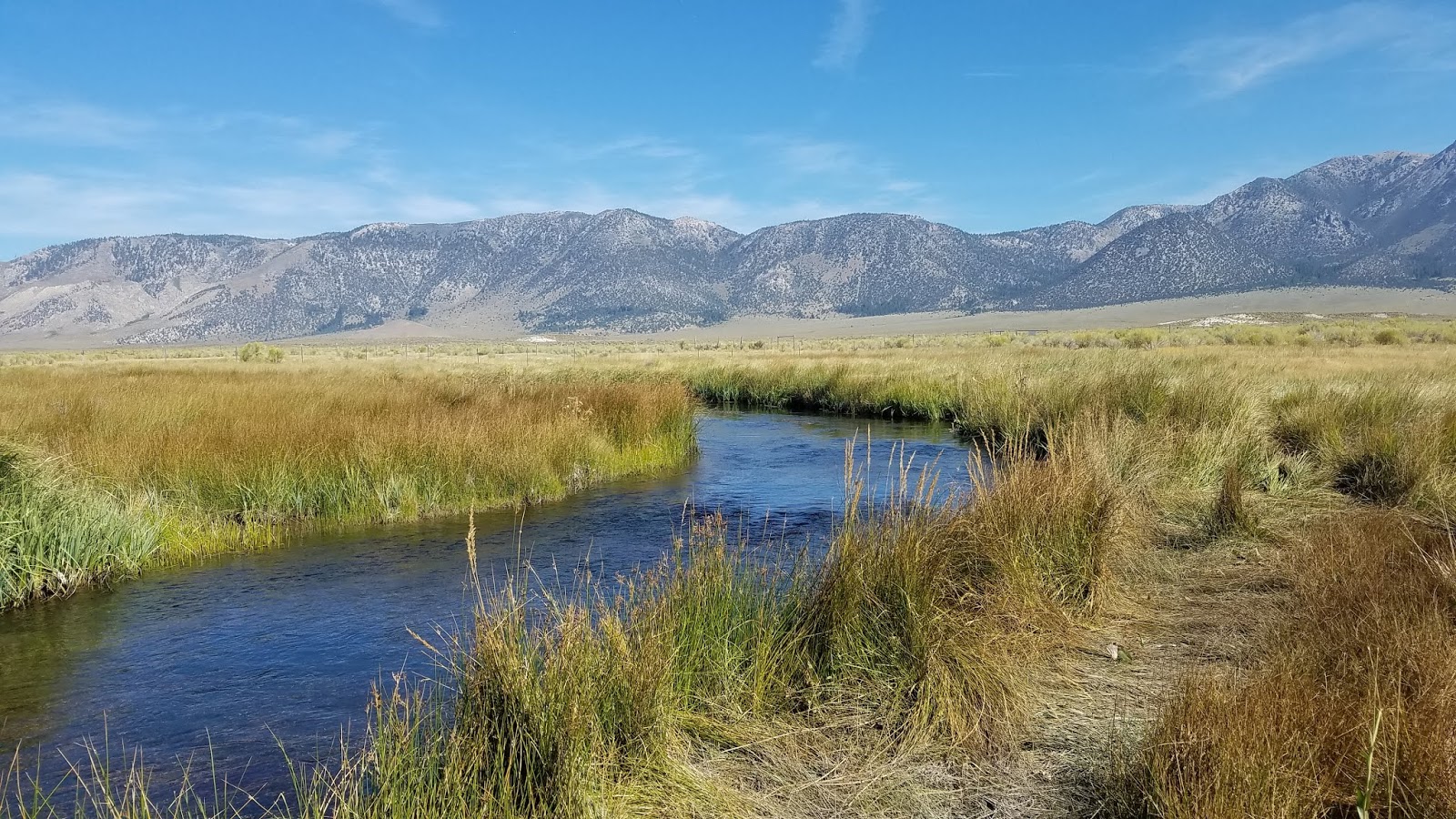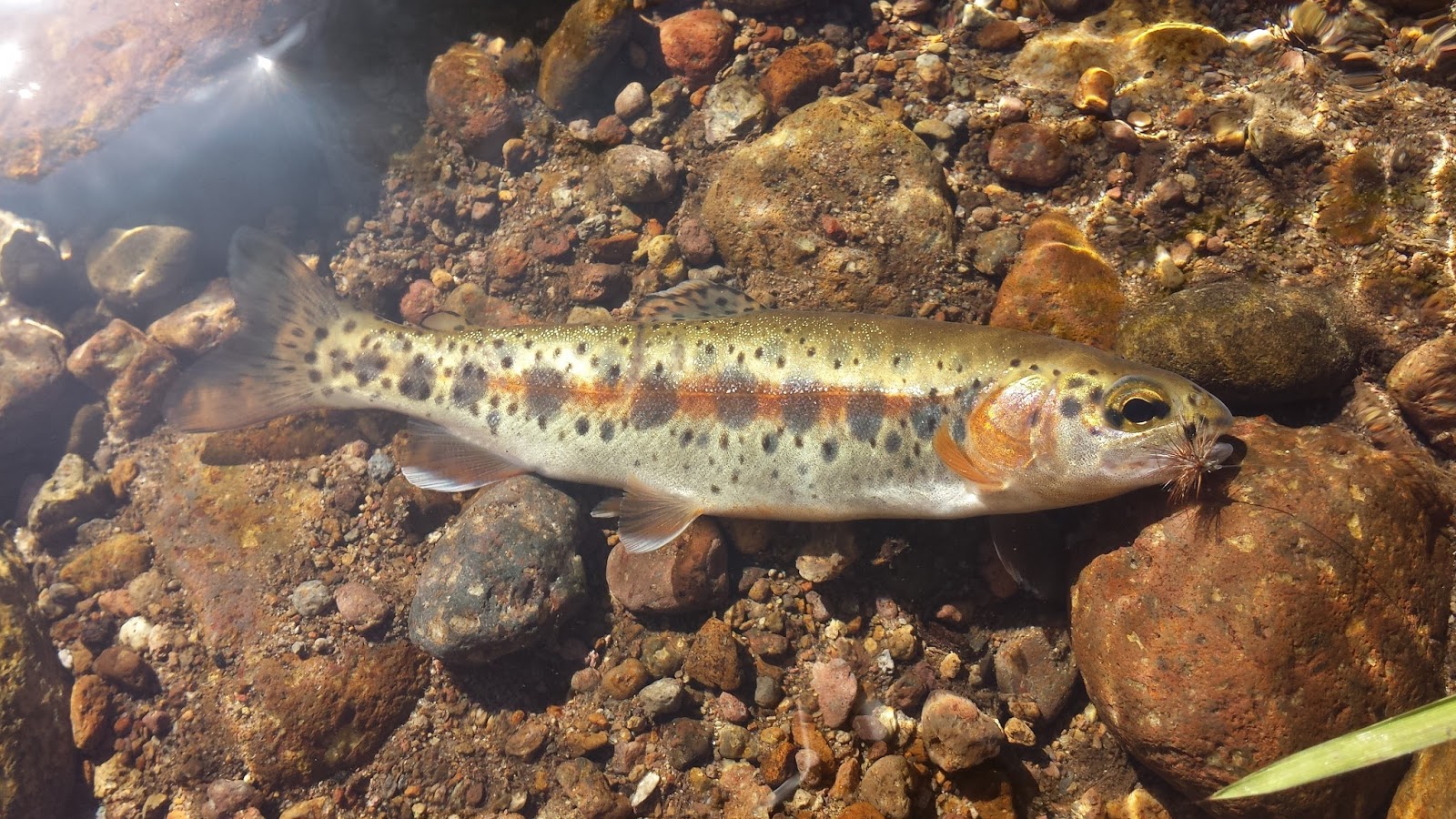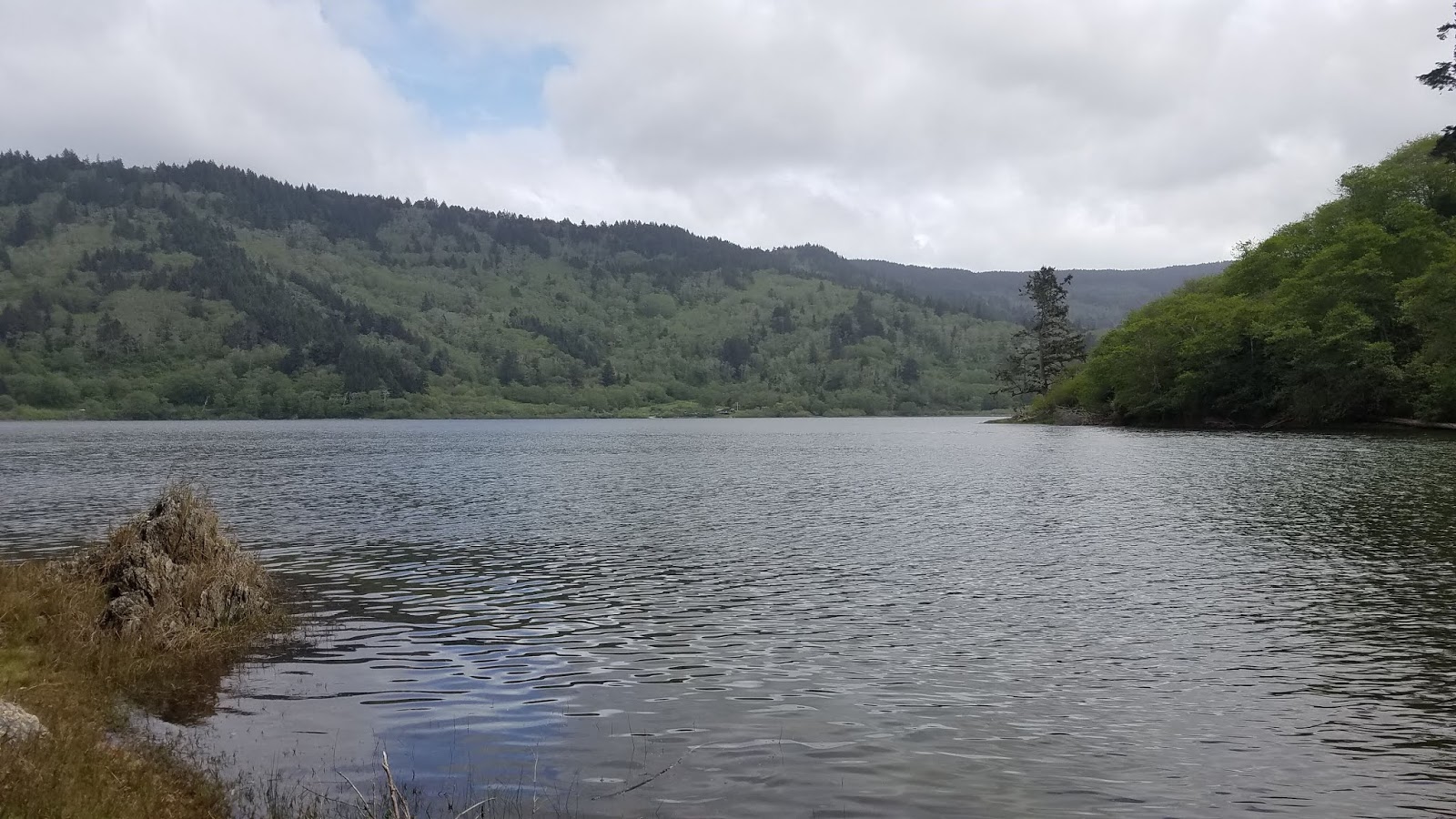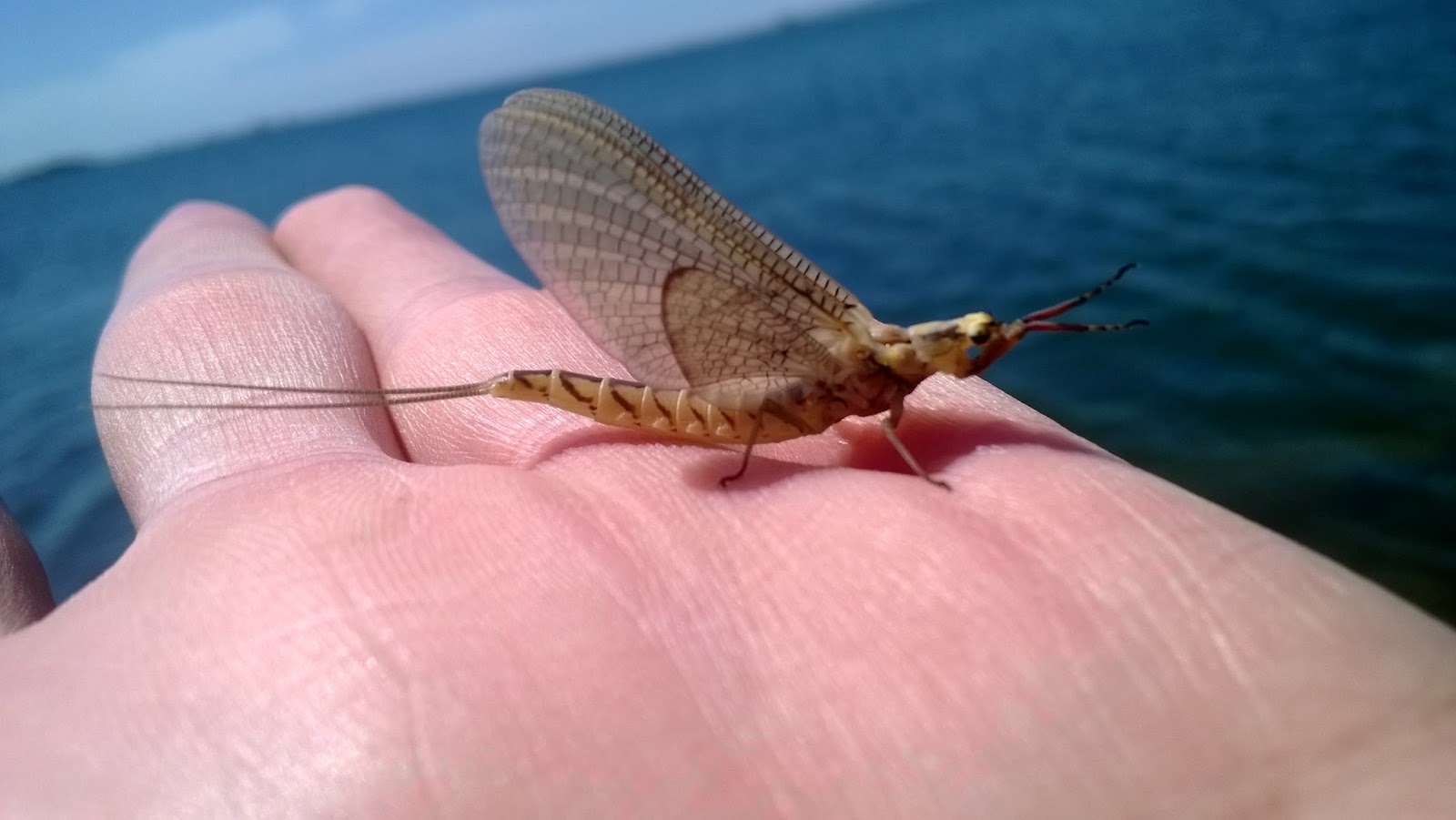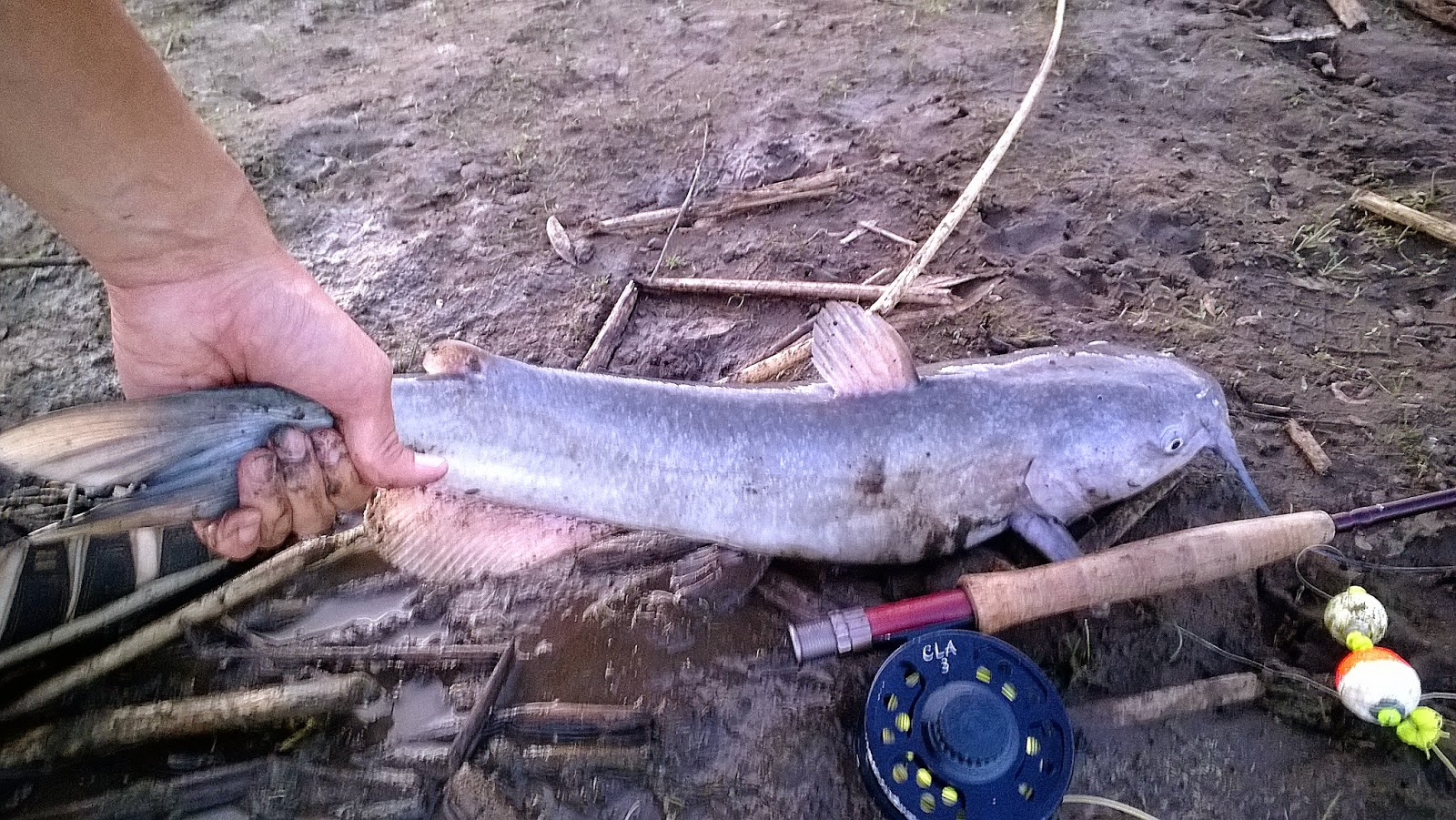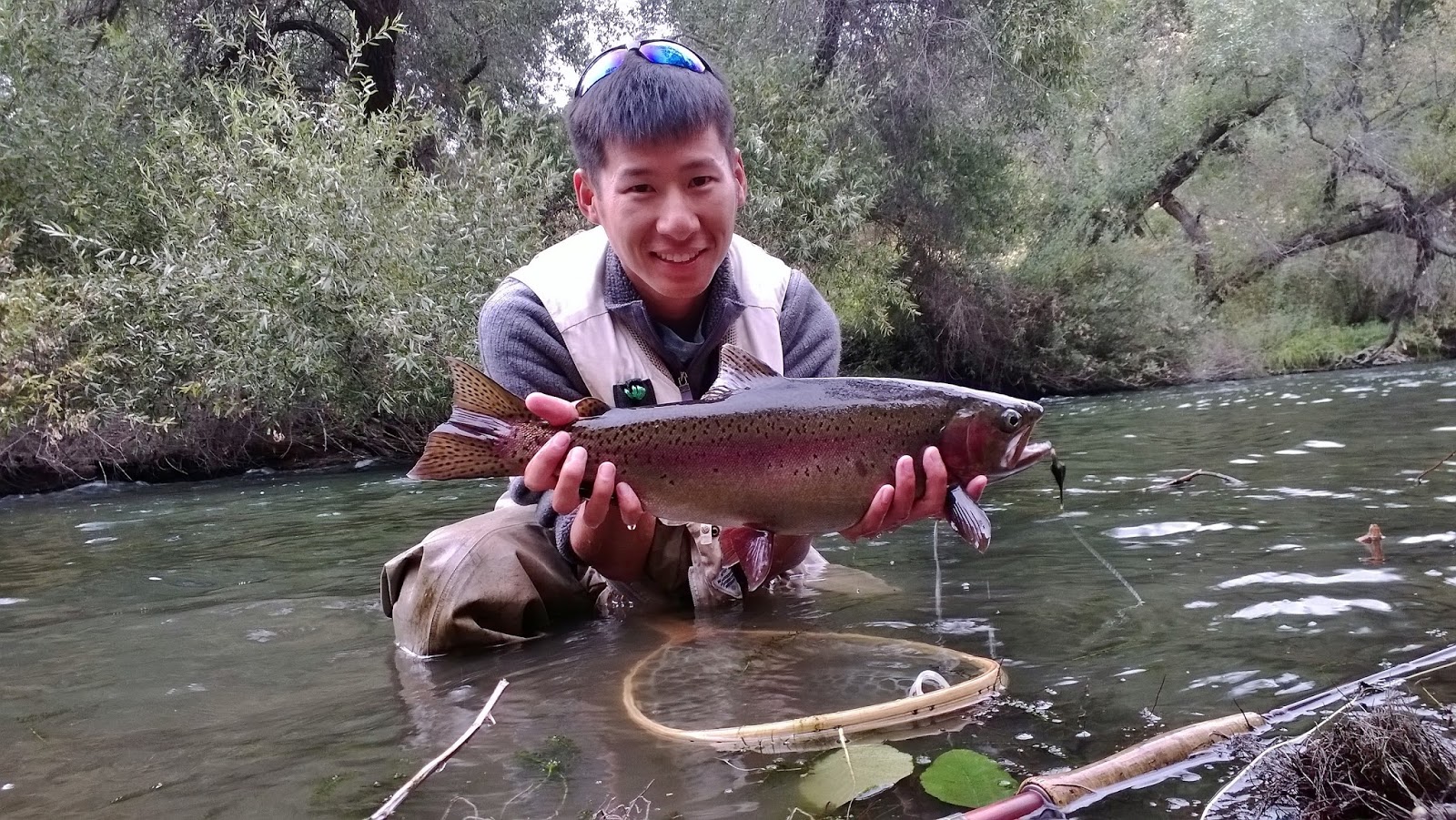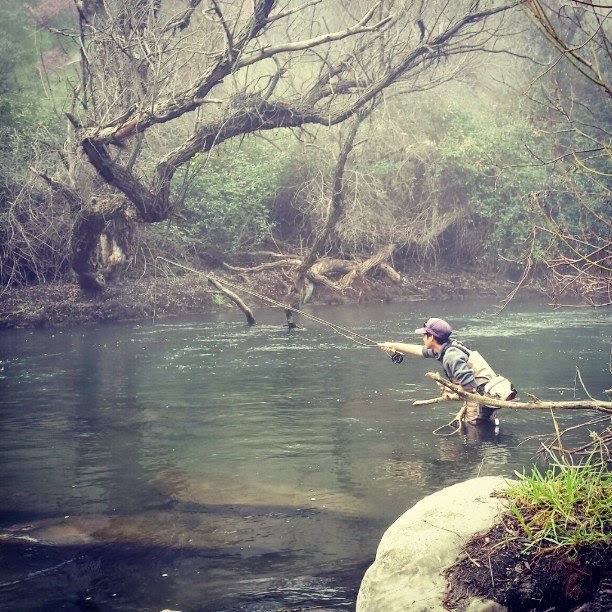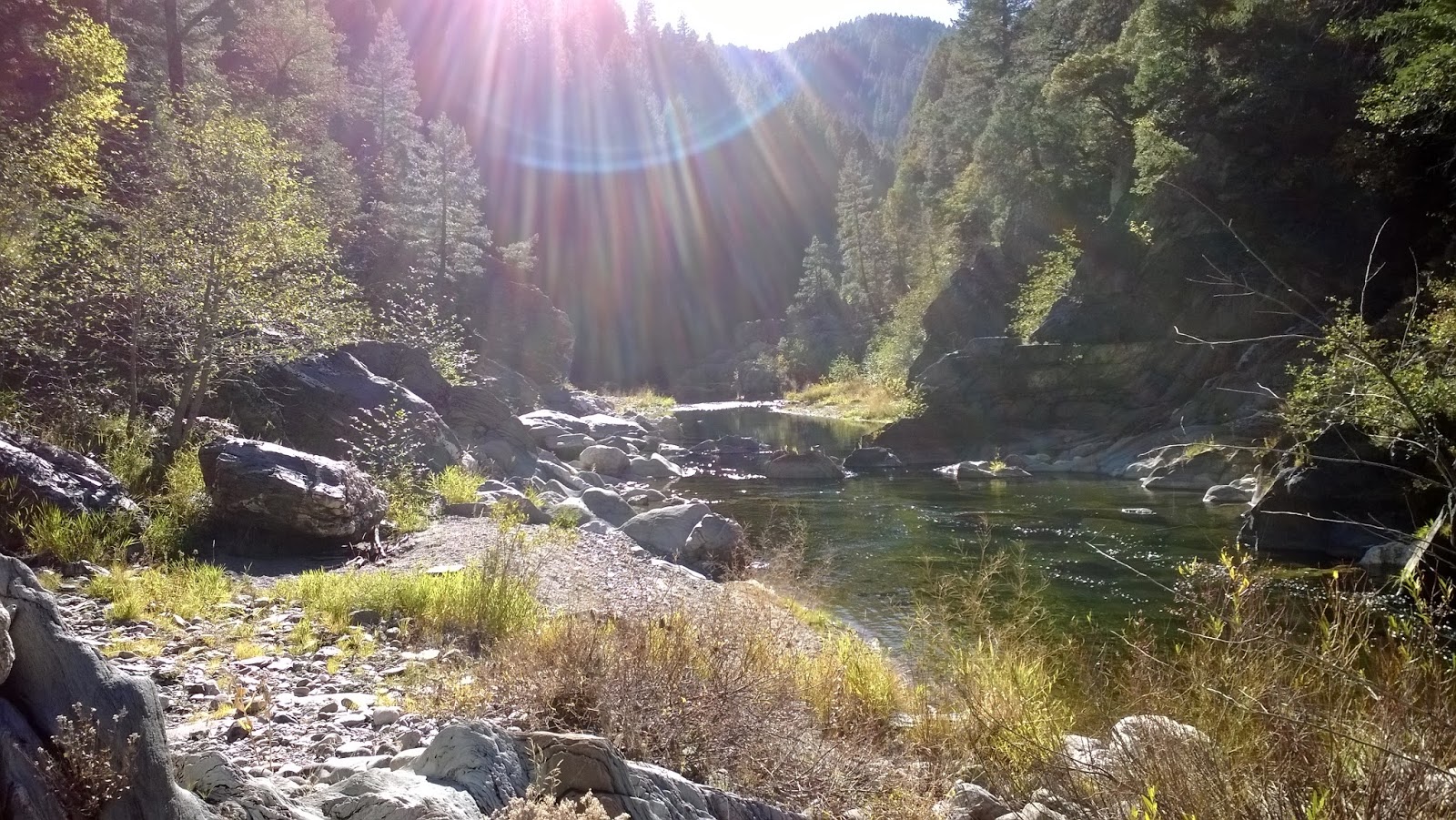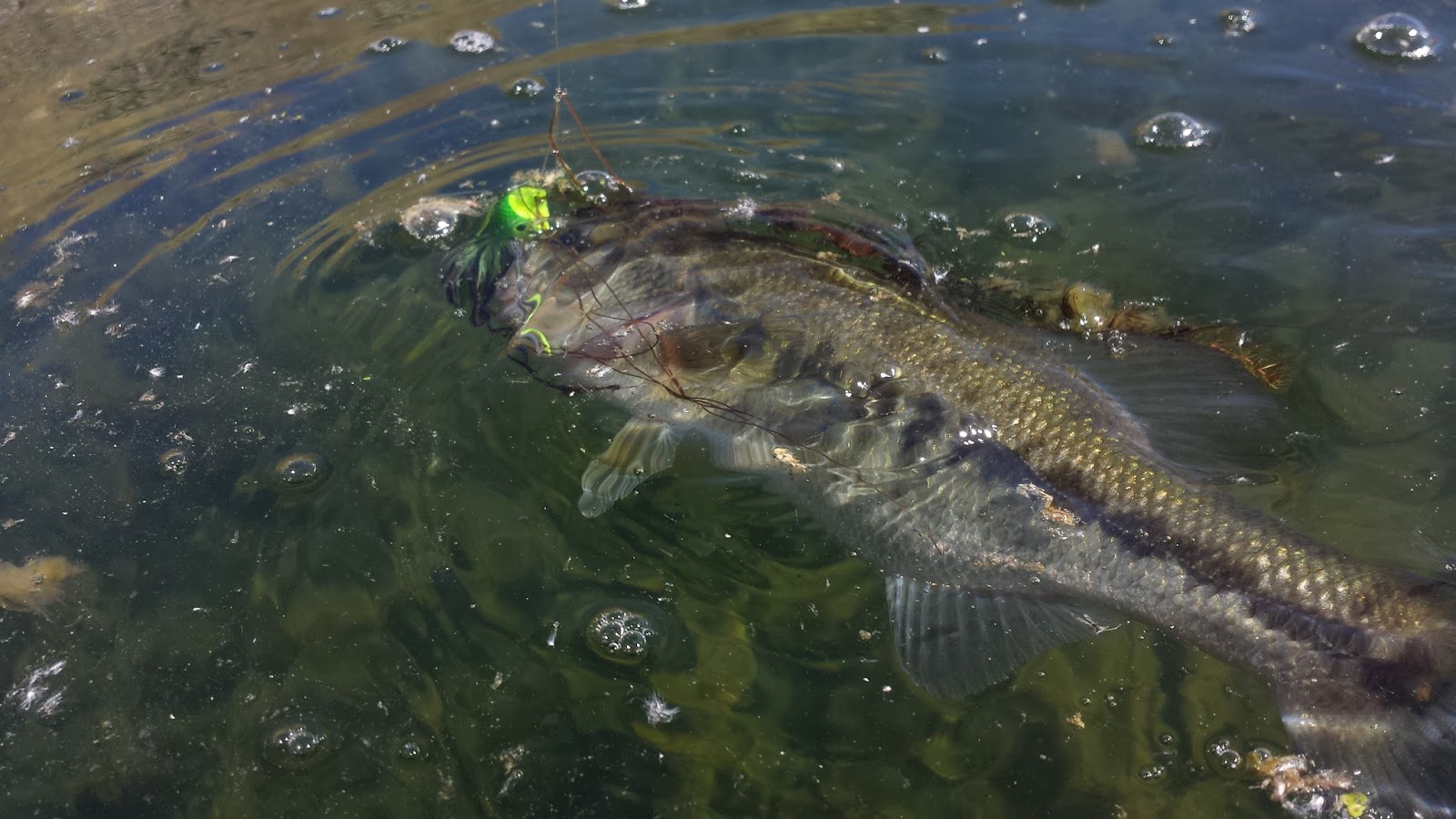The Eastern Sierras is what I would consider to be fly fishing country in California. With an average elevation of over +6000ft, a large majority of rivers, lakes, and streams in this part of the state hosts wild populations of rainbow, brown, brook, and even cutthroat trout. The Eastern Sierras is every fly angler’s dream and should be on their bucket list as a place to take a fly fishing pilgrimage.
I’ve taken the pilgrimage to the Eastern Sierras twice so far once in the fall and the other during the early spring. It’s beautiful country out there and the fishing can be spectacular if you hit it just right. This recent visit to the Eastern Sierras wasn’t as grand as my last three day visit two years ago however exploring new waters and getting away from it all in the majestic outdoors made up for the lackluster fishing.
My itinerary this trip was to fish new waters: the Upper Owens, Crowley Lake, Lower Rush Creek, and Grant Lake.
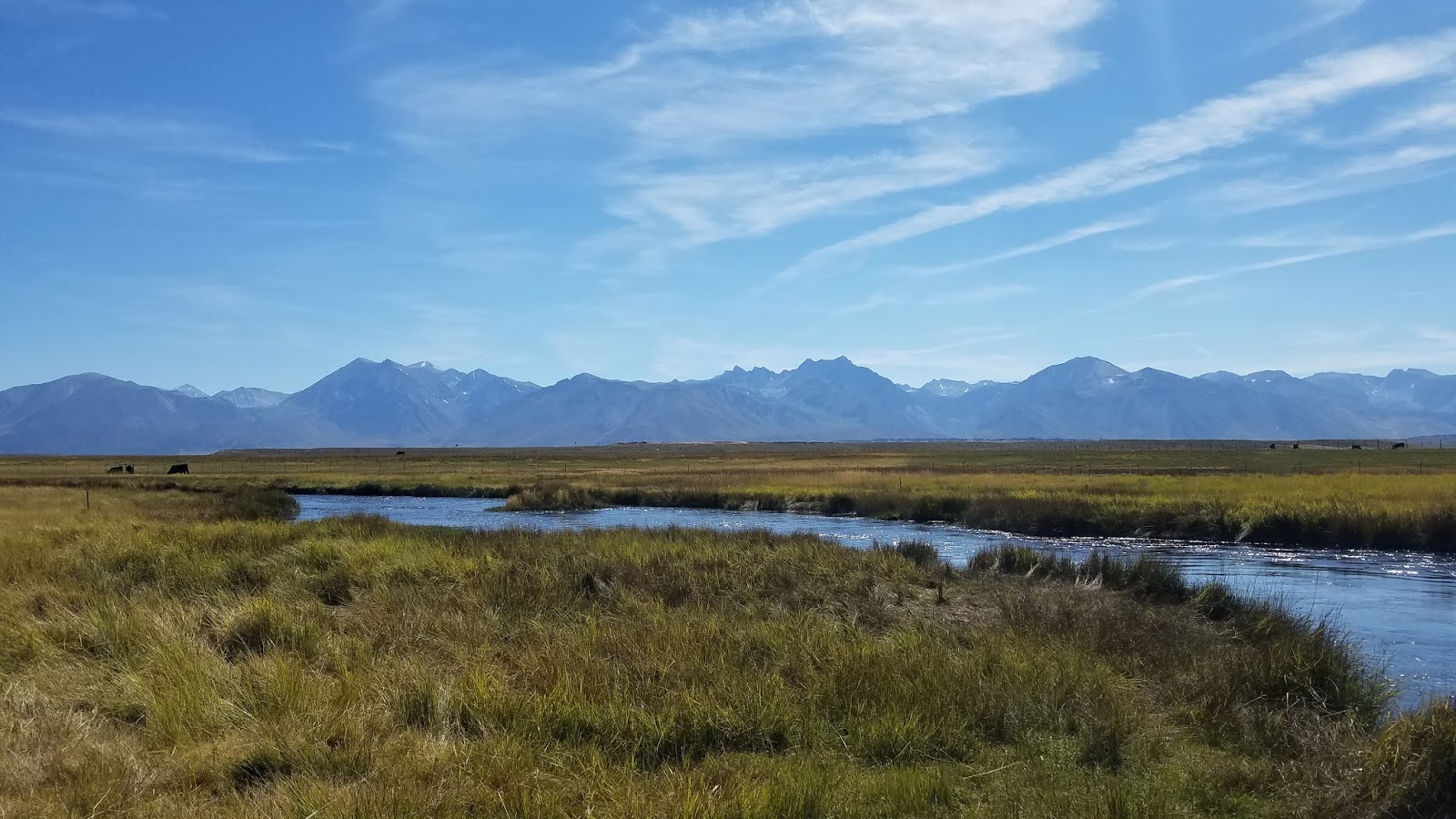 |
| Upper Owens Backdrop |
Upper Owens
I’ve read a lot of positive things about the Upper Owens. Essentially a spring creek, this stream serves as an inlet to Crowley Lake and will see a migration of large lake dwelling trout during the spring and fall as they move up to spawn. A trout grandslam is possible on the Upper Owens as it is home to a trifecta of rainbow, brown, and cutthroat trout.
As soon as I arrived on the Upper Owens I noticed that it was a lot smaller than I had expected. The Upper Owens branches in many different directions as different springs feed it. Most of the branches are narrow only about 5ft at the widest. Despite being quite small, the river was full of fish.
 |
| Upper Owens Brown |
I knew mid-September was a bit too early to catch the prime time of the migration so I put the thought of finding a large fish in the back of my mind. Instead, I focused on exploring the river. What I found were hoppers, hoppers, and more hoppers. The amount of hoppers that scattered as soon as I took a step into the tall grass was insane. The hoppers were surprisingly good at avoiding the water however from time to time several of them would fall into the stream and the fish would go crazy for them.
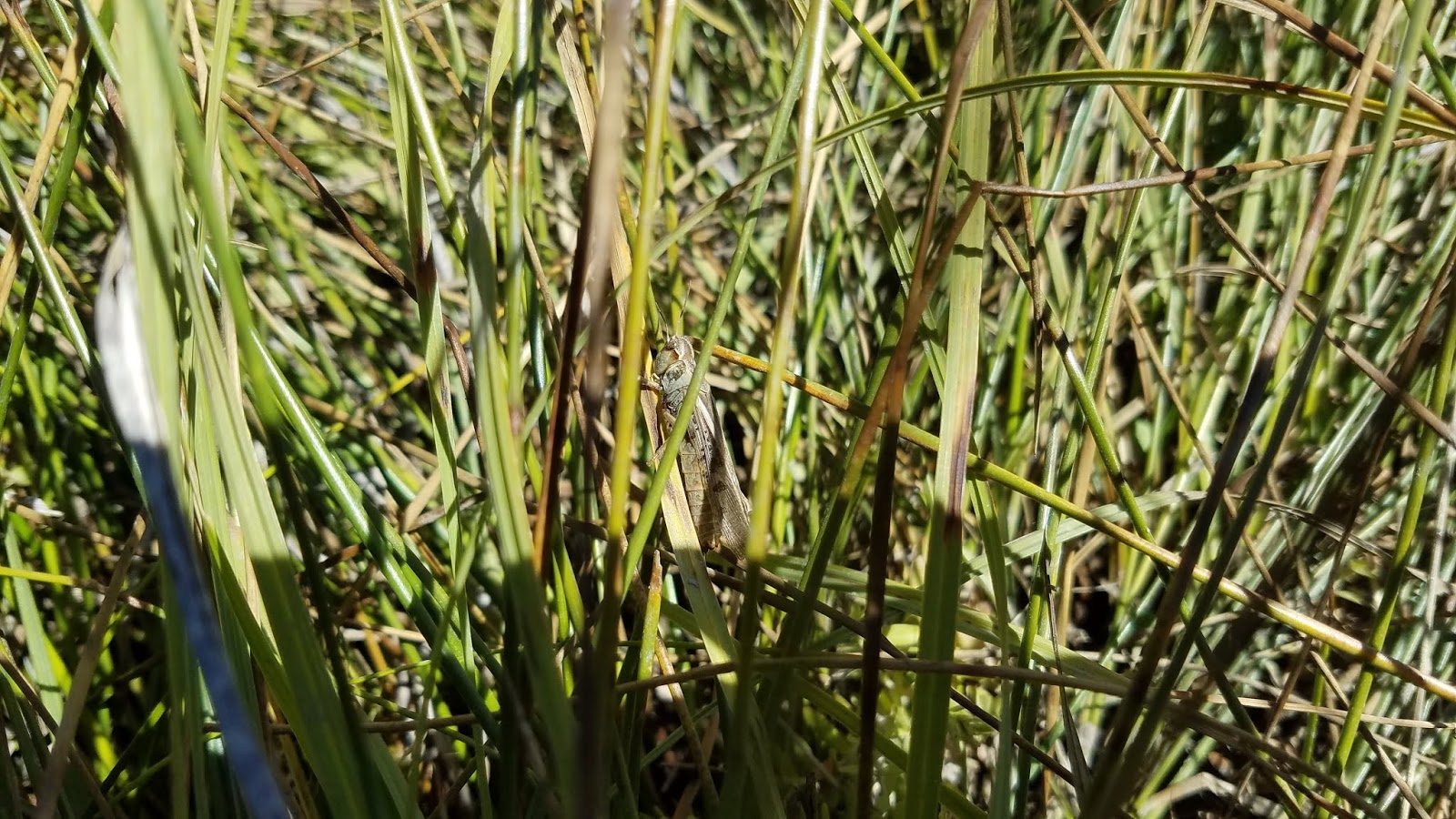 |
| More Hoppers |
I had several hopper patterns in my fly box when I initially started fishing and by the end of the day I had none left. I covered tons of water and rose a fishing in every decent looking channel I found along the way. Plop, sploosh, set! The fish were actually turning backwards to rush and grab my pattern that’s how much they wanted it. The fishing was absolutely incredible on the Upper Owens.
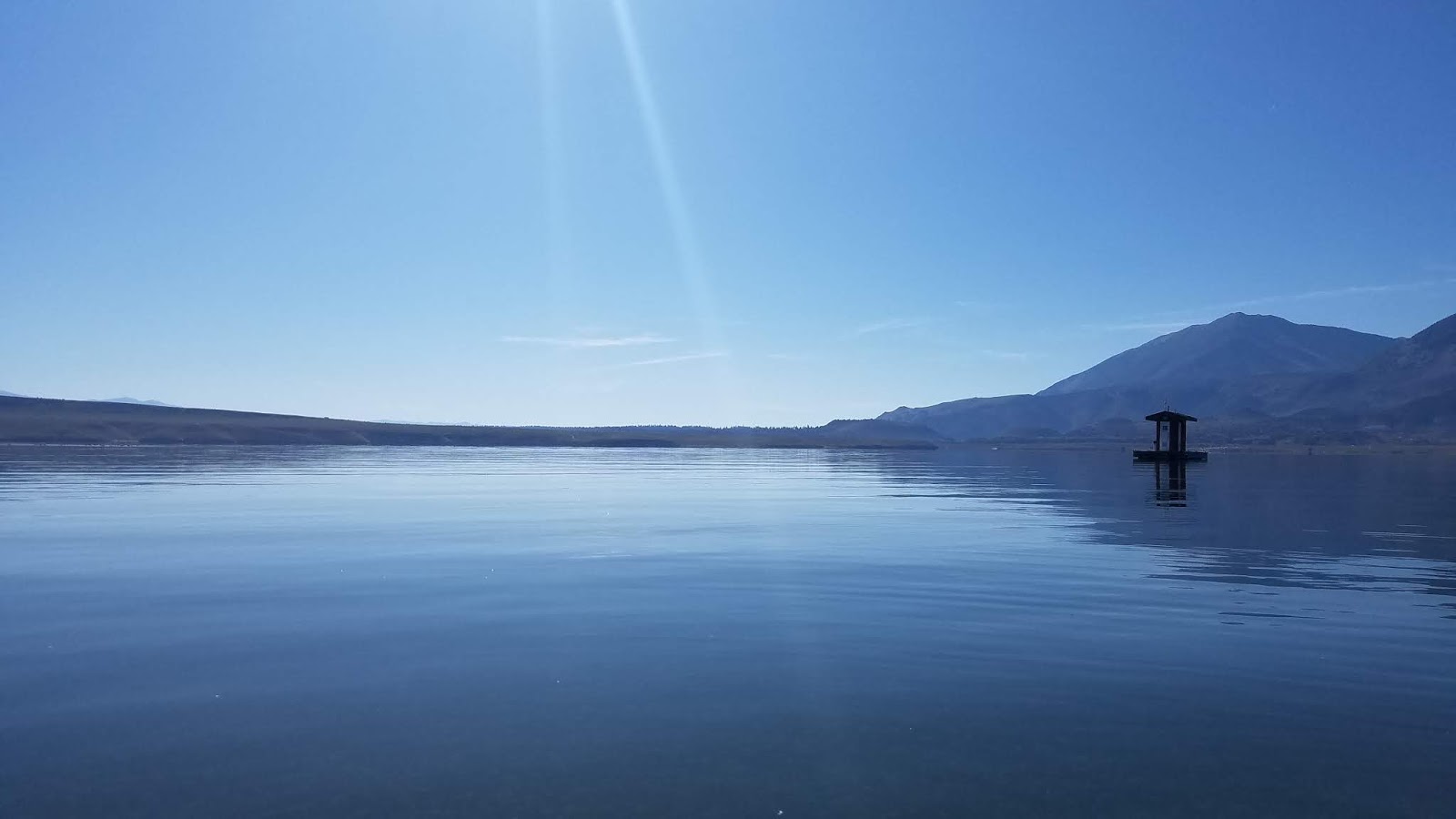 |
| Morning On Crowley Lake |
Crowley Lake
After a fantastic day on the Upper Owens I set up camp at the nearby Crowley Lake BLM campground. Once the sun went down and I saw how full the moon I started having serious doubts about how successful I’d be on Crowley Lake the following day. At an elevation of 7,000ft the full moon was beaming like a second sun. The fish were definitely going to be feeding all throughout the night.
I launched my kayak on the western end near McGee Bay where I had read in a report was where the fish were concentrated. I met an fly angler named David from LA who had fished the lake for many years. David shared some extremely valuable intel about how the lake was fishing this year. “It’s been a really weird year this year for this lake” is what summarized all of David’s thoughts about Crowley. David reported that the lake was still very high making it difficult to distinguish the weedlines due to them being underwater. The weedlines on Crowley Lake are important to finding where the fish were, “You want to fish just outside of them.” My confidence began to wane as I listened to David and watch as anglers who had gotten to the lake before me come up fishless.
“Fish deep, they like to hang out about a foot off the bottom.” That was the strategy that David revealed to me about Crowley Lake. Throughout the day I marked tons of fish on my fish finder that appeared to be in the bottom part of the lake. I switched depths and patterns on my indicator rig several times however I was unable to get a single grab. There were definitely fish around as I saw tons of fish rising for what I believe were midges throughout the lake. I eventually gave up after the wind started to picking up a little bit after noon.
Crowley Lake was a bit of a disappointment. Now I knew why there weren’t a whole lot of people fishing it that weekend. It seems like the regulars and guides who had boats and knew the lake were catching fish. There were several significant factors that only they seem to know, particularly where the channels were hidden, and even then they were having a tough time getting into fish.
Maybe I’ll return and try it again someday but for now I have no desires of returning to Crowley Lake any time soon.
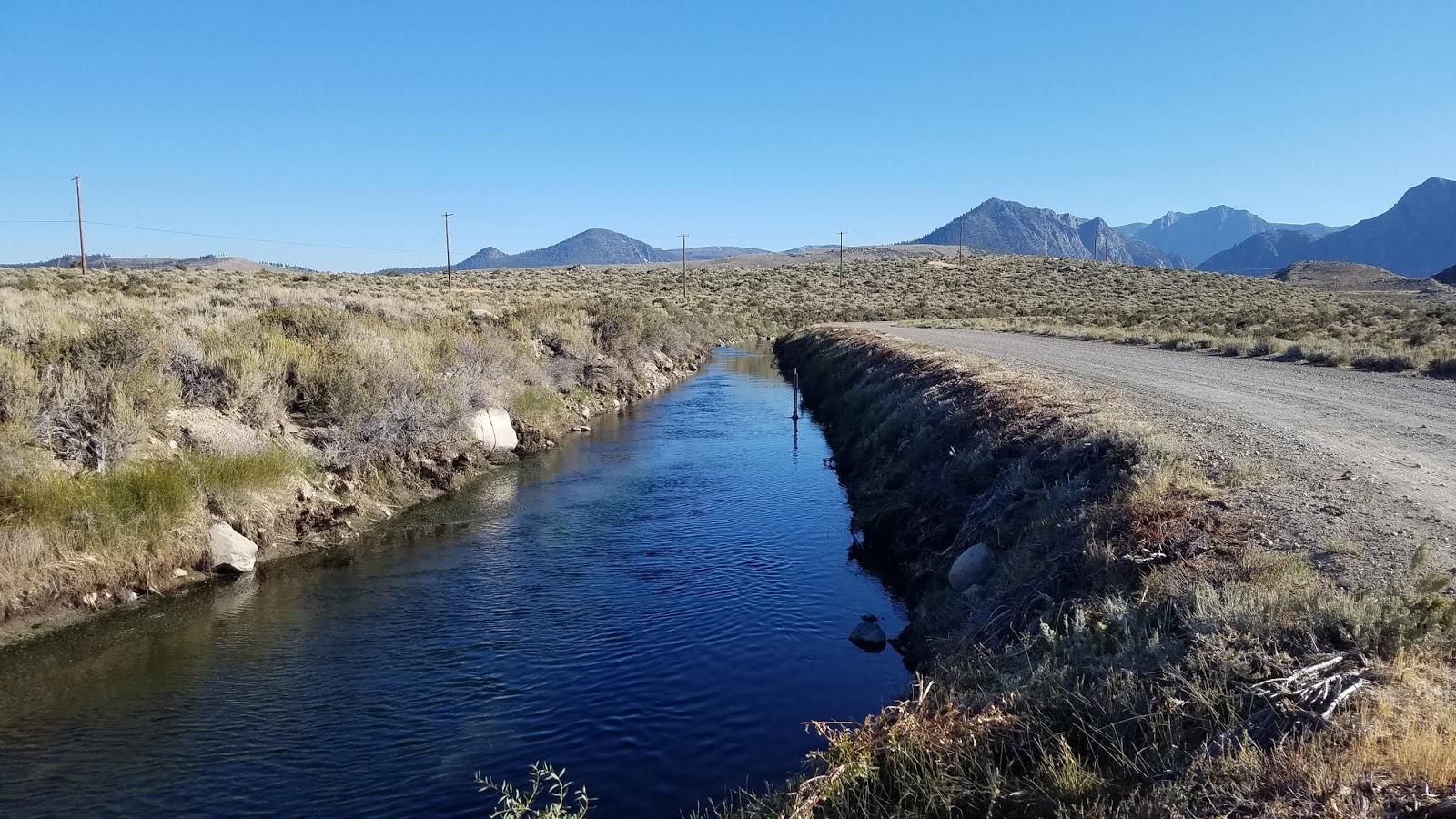 |
| Rush Creek Canal |
Lower Rush Creek
This creek is one of the few catch-and-release barbless artificial only in the Eastern Sierras. I was curious to see if the fishing was any good and had my eyes set on a very interesting part of the creek, a canal.
After getting lost a few times due to the bridge being out I was finally able to find my around and get to the Lower Rush Creek canal. The canal lies below Grant Lake where I believe the water is diverted to provide an inlet for Mono Lake. This canal is skinny water whereas it is only about 3ft wide and about 3-4ft deep, it is an artificial spring creek.
I was surprised to find the canal to be full of trout, it had been the first time I had ever seen anything like it. The fish were extremely spooky. These fish had eyes on the back of their heads as even an approach from behind would spook them. There were several factors that made it impossible to trick these fishing into eating:
1. The canal is steep. I believe that these fish are trained to know where to look for anglers as the only way to traverse the canal was on a somewhat steep single path, the opposite side of the canal was impossible to fish from due it being even more steep.
2. The direction of the sun. I attempted to fish this creek in the evening. Casting downstream was the only way I was going to have a chance to trick a fish. The sun was directly in my eye as I faced downstream therefore there was no way I was going to be able to tell if they took my fly. The morning would have been better to try and attempt this creek.
3. The bank is lined with snags. The bushes that grow near the bank will snag your fly line 90% of the time if they make contact. The best remedy for this would be to fish with a stripping basket which I did not have.
 |
| Lower Rush Creek |
I gave up trying to fish Lower Rush Creek after figuring out that the fish had a huge unfair advantage. Overall nothing too exciting about this creek, I may have to try it just one more time in the less skinny parts.
I didn’t make it to Grant Lake because my kayak had a puncture underneath it, bummer.
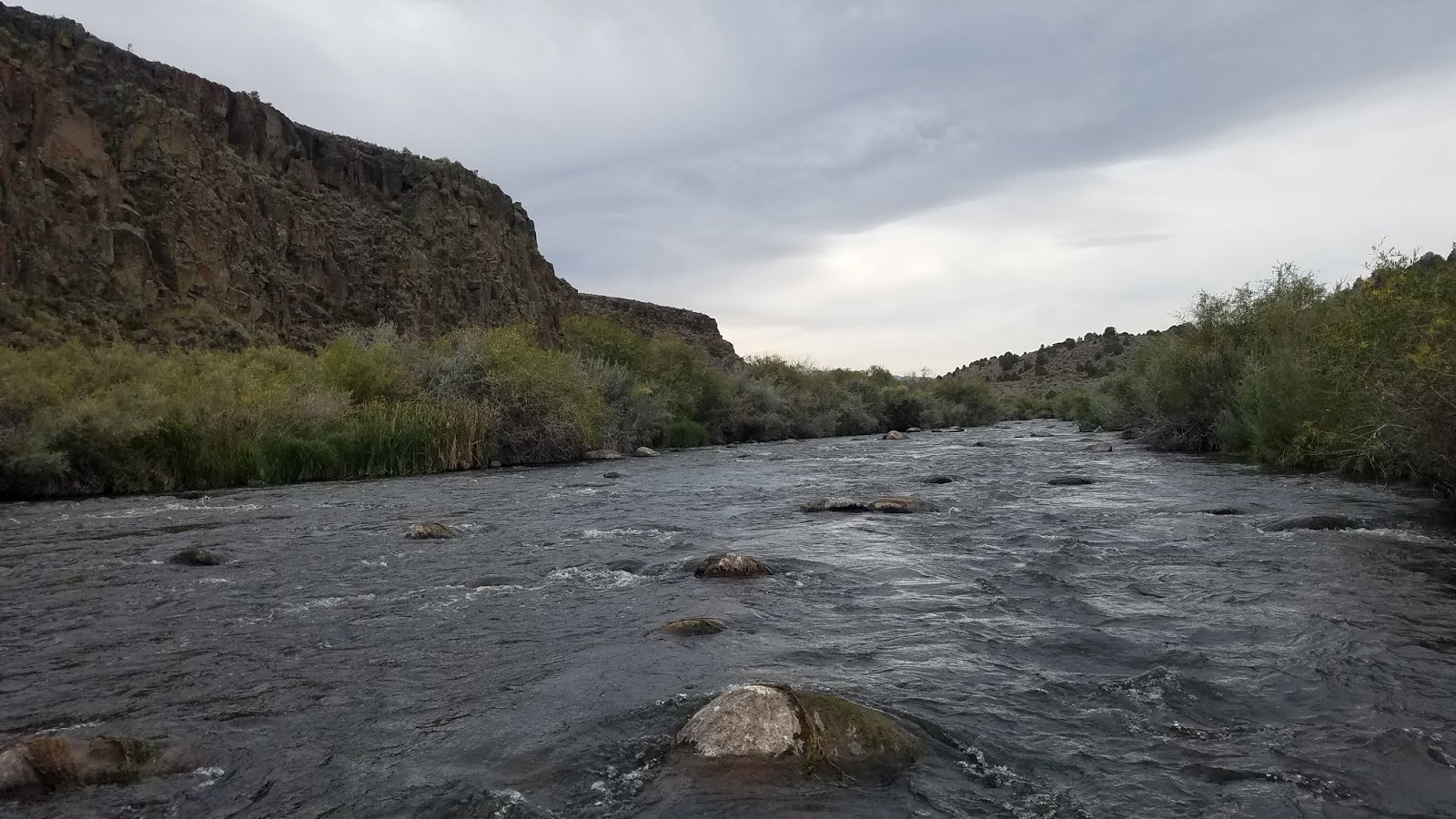 |
| East Walker Canyon |
East Walker River
I ended my trip on the East Walker River which was not fishing very well. I managed to get a few grabs on streamers but the fishing was pretty poor in comparison to the last time I was there. The flows were great in the canyon section and I explored a bit of it. There didn’t seem to be a whole lot of activity. If it were any other stream it would be full of fish due to some high quality pocket water. I believe that the Nevada side would probably fish better due to it not being as gradient and having more soft water.
 |
| My First Canyon Brown |
Overall this trip had a lot of hit-or-miss which was a bit unfortunate. However things are starting to turn around as today marks the first drops of fall rain which means it’s officially steelhead season. Good-bye Eastern Sierras, hello valley rivers!
